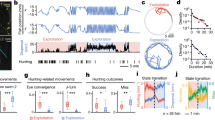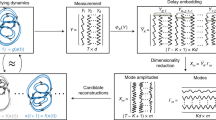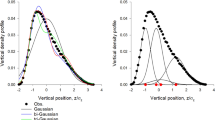Abstract
A MODEL for the swimming and orientation of Panagrellus silusiae based on transitions between two behavioural states has been proposed1. The basis of this model is that in normal, unstimulated conditions the nematode follows a more or less linear path with the anterior and posterior ends of the animal sweeping through a minimal area. This is termed the ‘normal’ behavioural state. When stimulated by chemical or physical means, the animal enters the ‘activated’ state, making rapid changes in orientation with the ends of the animal sweeping through a maximal area. In the case of a gradient of an attractant, the animal remains in the activated state until it orientates to the gradient by sensing the maximum difference in intensity of the stimulus between the posterior and anterior sensory structures, at which point the animal returns to the normal behavioural state and migrates to the source of attractant. Laser microbeam studies indicated that the copulatory spicules of the free-living P. silusiae function as the posterior receptors for orientation to mating attraction in this species1, and a sensory function has also been found for the spicules in other species2.
This is a preview of subscription content, access via your institution
Access options
Subscribe to this journal
Receive 51 print issues and online access
$199.00 per year
only $3.90 per issue
Buy this article
- Purchase on Springer Link
- Instant access to full article PDF
Prices may be subject to local taxes which are calculated during checkout
Similar content being viewed by others
References
Samoiloff, M. R., McNichol, P., Cheng, R., and Balakanich, S., Expl. Parasit., 33, 253 (1973).
Lee, D. L., J. Zool., Lond., 169, 281 (1973).
Ward, S., Proc. natn. Acad. Sci. U.S.A., 70, 817 (1973).
Cheng, R., and Samoiloff, M. R., Can. J. Zool., 49, 1443 (1971).
Author information
Authors and Affiliations
Rights and permissions
About this article
Cite this article
SAMOILOFF, M., BALAKANICH, S. & PETROVICH, M. Evidence for the Two-state Model of Nematode Behaviour. Nature 247, 73–74 (1974). https://doi.org/10.1038/247073a0
Received:
Issue Date:
DOI: https://doi.org/10.1038/247073a0
Comments
By submitting a comment you agree to abide by our Terms and Community Guidelines. If you find something abusive or that does not comply with our terms or guidelines please flag it as inappropriate.



